There’s a bestselling book written by Patricia Schultz entitled “1000 Beautiful Places to See Before You Die.” The title of that book drew much attention when it was first published. One would not dare think about dying for one, but everyone of course is excited to see beautiful places. On this book she pointed out the importance to embark on a vacation of a lifetime every month for the remaining part of your life.
Relating it to the Philippines, her book could inspire us to embark on a certain journey to Trip the Islands and go on a vacation of a lifetime every month for the remaining parts of our lives.
So better save some pennies, draw a travel plan to Trip the Islands and embark with me on this journey. The first 16 Beautiful Spots to see are just mere numbers and is our first installment of sorts, since in the Philippines, there are more than that and we are going to uncover more of them as a series of posts here at Trip the Islands.
#16 Boracay Island – Almost everyone wants to have the chance to visit Boracay to experience the white sand beach, the fresh exotic seafoods, the ambiance of the island and the chance to see the sprawling bodies of cool dudes and beautiful dudettes all over the island. Boracay is a place wherein one could get a chance to enjoy, away from all the hustles and bustles of busy urban life. For sure you will discover how it is to be a beach bum when in Boracay!
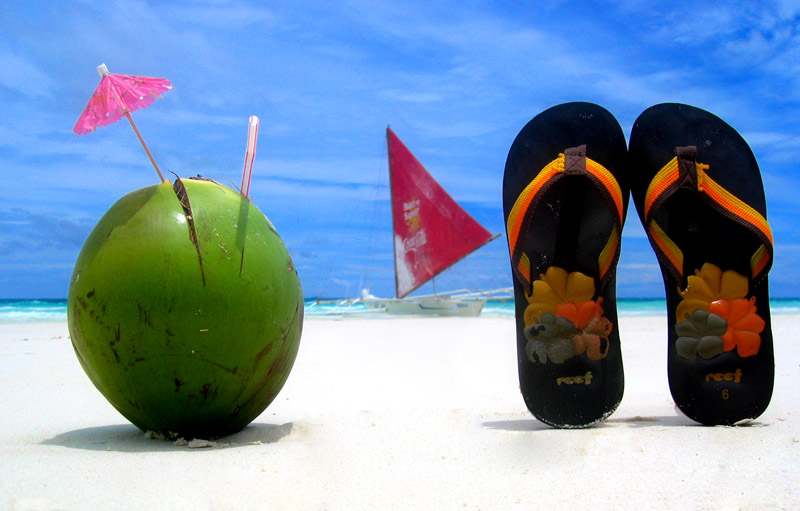
#15 Banaue Rice Terraces – The Rice Terraces are commonly referred to by Filipinos as the “Eighth Wonder of the World” and one of the places considered as one of the “World Heritage Sites” in the country. The original builders, the Ifugaos just used mud and clay to carefully carve and build the walls of these terraces that could be used for the production of rice. They also came up with ways on how water would flow into the rice fields from the mountain tops. This structure has been there for almost 2000 years and yet, farming is still being done in the rice paddies up to now. That’s how great our Ifugao brethren are, true blooded Filipino Engineers way before modern engineering has been introduced to the Philippines.
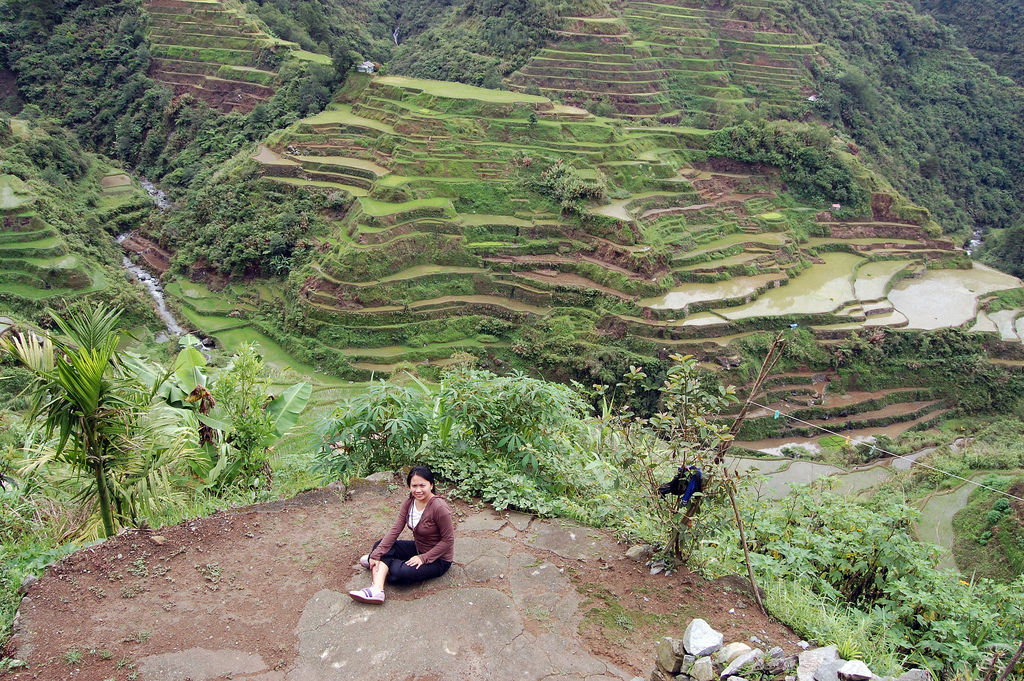
#14 Baguio City – It is considered to be the Summer Capital of the Philippines for the reason that during summer season, local and foreign tourists frequent the city due to its naturally cool climate since it is almost one of the highest cities in the Philippines. But historically, the city has been declared by the Americans as The Summer Capital of the Philippines in 1903. It served as the heat getaway site of the Americans during that era to escape the Manila summer heat. Baguio City up to now has been one of the top tourist destinations in the Philippines specially for those who love to experience its cool climate and to explore the city’s American influenced structures and sites.
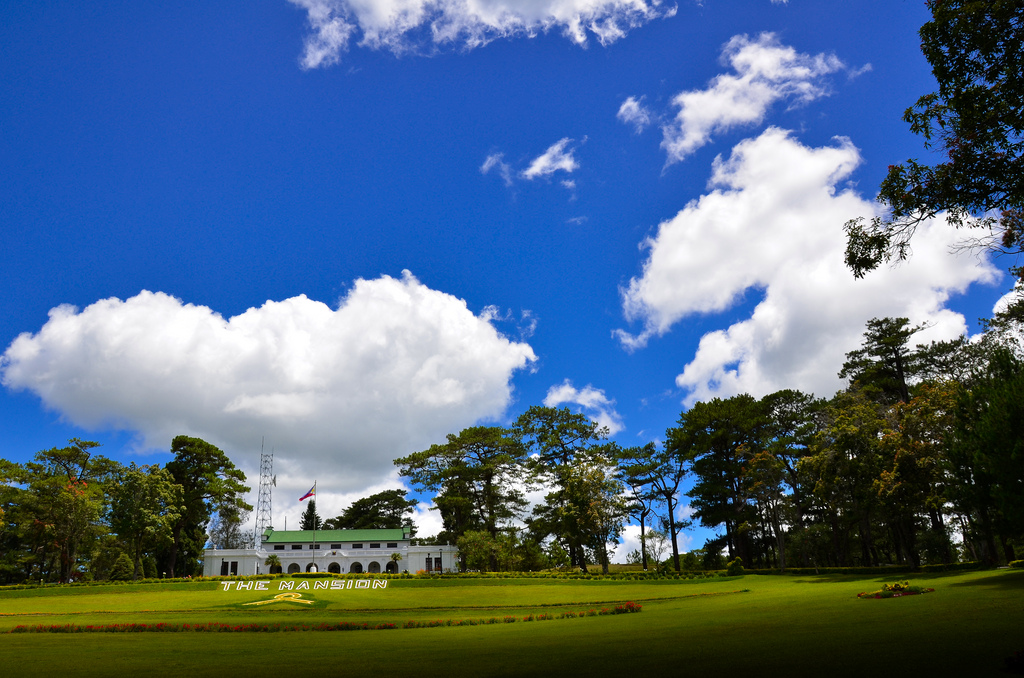
#13 Hundred Islands National Park – It is located at the Lingayen Gulf. It was and is really fascinating to see and wonder how these small islands get there. The islands are actually ancient corals that extend well inland, in an area previously comprising the seabed of an ancient sea.The lowering sea levels have exposed them to the surface and the peculiar “mushroom”-like shapes of some of the islands have been caused by the eroding action of the ocean waves. This is a must-see when traveling to the northern parts of the Philippines. Once should not miss the opportunity to visit this destination and check out the various wildlife such as the dugongs, the dolphins and other animals in the park.
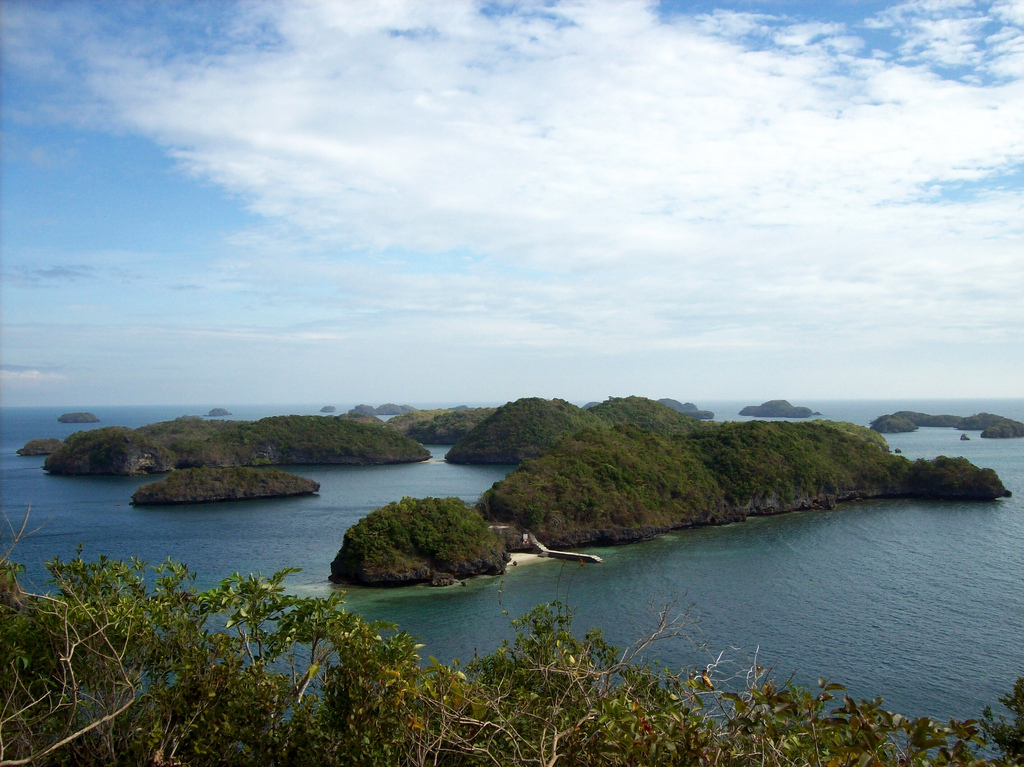
#12 Liloan, Cebu – Long before other towns were “discovered” as tourist spots, Liloan was already known for its scenic pristine beaches and as a resort town. It is a favorite place for sea bathing. Along its coastline, there is spot called Silot. Here, bathers are cautioned not to swim to a certain point because of a whirlpool caused by the ebbs and flows of the waters from the bay. This phenomenon is called lilo in Cebuano. Because of this, the town was known as Liloan, a place where there is lilo. Among the top must-see in this destination is the historic Liloan lighthouse at Bagacay point. The original lighthouse was first built in 1857 by the Spaniards while the current tower was built by the Americans, as ordered by Gov. Gen. Howard Taft, the first American Governor General of the Philippines in 1903. It was declared as a national historical landmark on August 13, 2004 by the National Historical Commission of the Philippines. The lighthouse in Liloan Cebu is still operational using solar energy.

#11 Taal Volcano – This volcano is the second most active volcano in the Philippines, the last eruption was in 1977. The Taal lake (and its crater) is one of the famous tourist destinations located in the province of Batangas. However, if you are in Tagaytay, the grandiose view of the volcano could be seen with the most picturesque and attractive view from the Taal Ridge, Tagaytay.
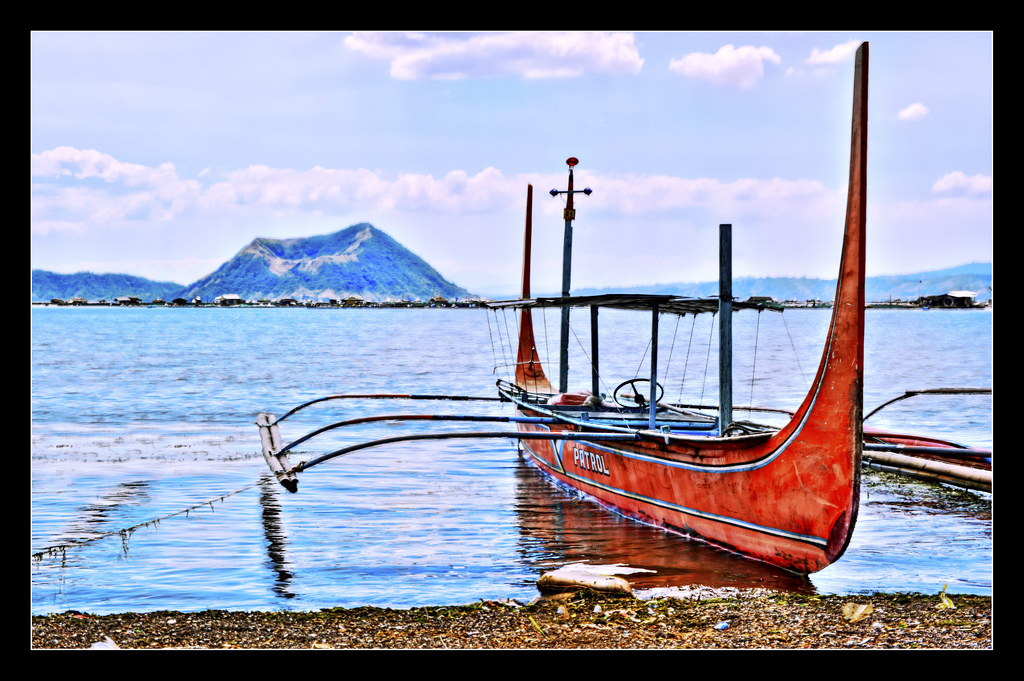
#10 Mt. Apo, Davao – The highest mountain in the Philippines and also considered as the King of Philippine Peaks. Apo, which means “ancestor”, is a flat-topped mountain with three peaks and is capped by a 500-metre-wide volcanic crater containing a small crater lake. The date of its most recent eruption is unknown, and none are verified in historical times. The volcano is one of the most popular climbing destinations in the Philippines with the summit, on the average, takes two days to reach. The first recorded climb was on October 10, 1880, by a party led by Joaquin Rajal, then Spanish governor of Davao. Mt. Apo is not exclusive to Davao City though. It could also be reached through Bukidnon and Kidapawan. However, the best passage going to its peak is in Davao City. Mt. Apo is the dream climb of most mountain climbers in the Philippines.

#9 Siargao Island – Whether you are a surfer or not, this destination is a must-see. Aside from the surfing sites in General Luna, Siargao has one of the best beaches in the island. It is famous for its surfing wave called the Cloud 9, it is the type of wave that local and international surfers look for. It is for this reason that Siargao annually holds International Surfing competitions. It is considered as the Surfing capital of the Philippines.
If you are not a surfer, there are lots of tourist destinations in Siargao island. Among which are; the Del Carmen Swamps – which has a total mangrove forest of 8,620 hectares, where a single forest block of which consist of 4,200 has. It is a sanctuary of the large species of salt water crocodiles or the endangered Crocodylus Porosus and habitat of other rare and endangered species of flora and fauna; Sohoton Cave, Socorro – this enchanting cave is half submerged in water most of the time and accessible only during low tides. Inside is a lagoon with countless islets surrounded by crystal waters that sparkle with the bright reflection of the sun; Magpupungko Rock Formation, Pilar – surrounded by limestone and granite sculptures facing the pacific ocean, its pockmarked limestone floor reveals pools of assorted shapes and sizes resembling basins, barrels, tubs and ponds during low tide; Santa Monica Waterfalls, Sta. Monica – the gentle bursts of cool, cascading water amidst the tranquility of lush vegetation allows the nature lovers to commune with nature. One would not run out of sights to see when visiting Siargao.
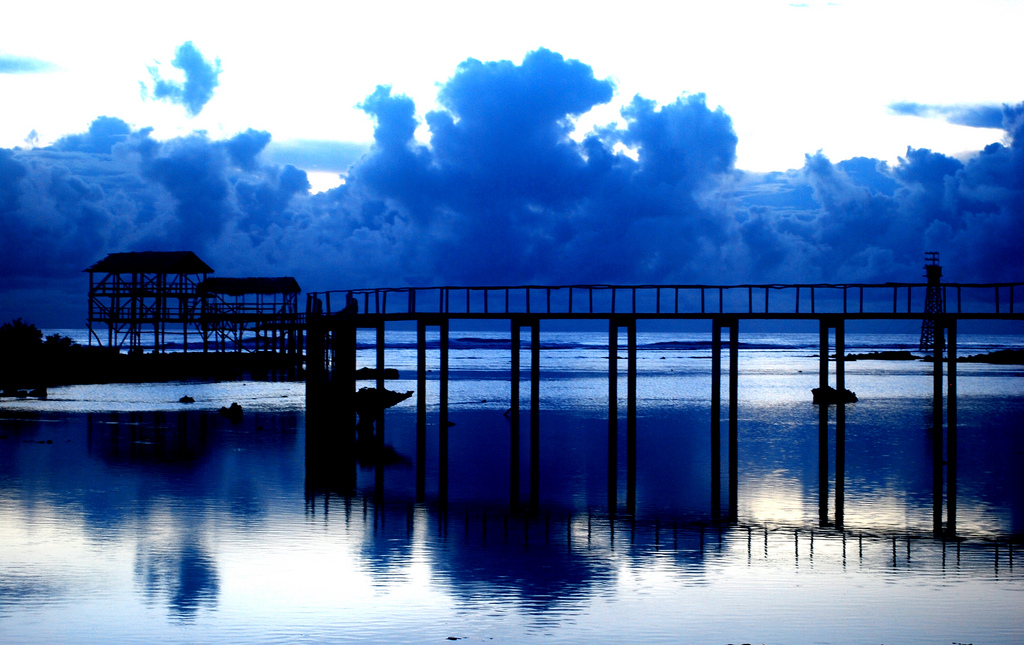
#8 Donsol, Sorsogon – It is a popular tourist destination for whale shark viewing in its bordering seas. Swimming with whale sharks was featured as the Best Animal Encounter in Asia by Time Magazine in 2004. Whale sharks can be seen between November and June, with presence peaking between February and May. Locals of Donsol has interfaced with the whale sharks for over 100 years. However, they believed that these giants were dangerous and feared to interact with these giants. This wrong notion changed when in December 26, 1997, a group of scuba divers led by Romir Aglugub – a PADI diving instructor, discovered its presence, and interacted and came in contact with the Whale Sharks. By March 1998, Donsol became world-class tourist destination and now known as the “Whale Shark Capital of the World”. Interaction with the whale sharks is regulated by the local Department of Tourism (DOT) office. WWF guidelines are generally observed to protect the sharks. Rules include limiting the number of swimmers per boat to six, no scuba divers and staying further than three meters from the sharks.
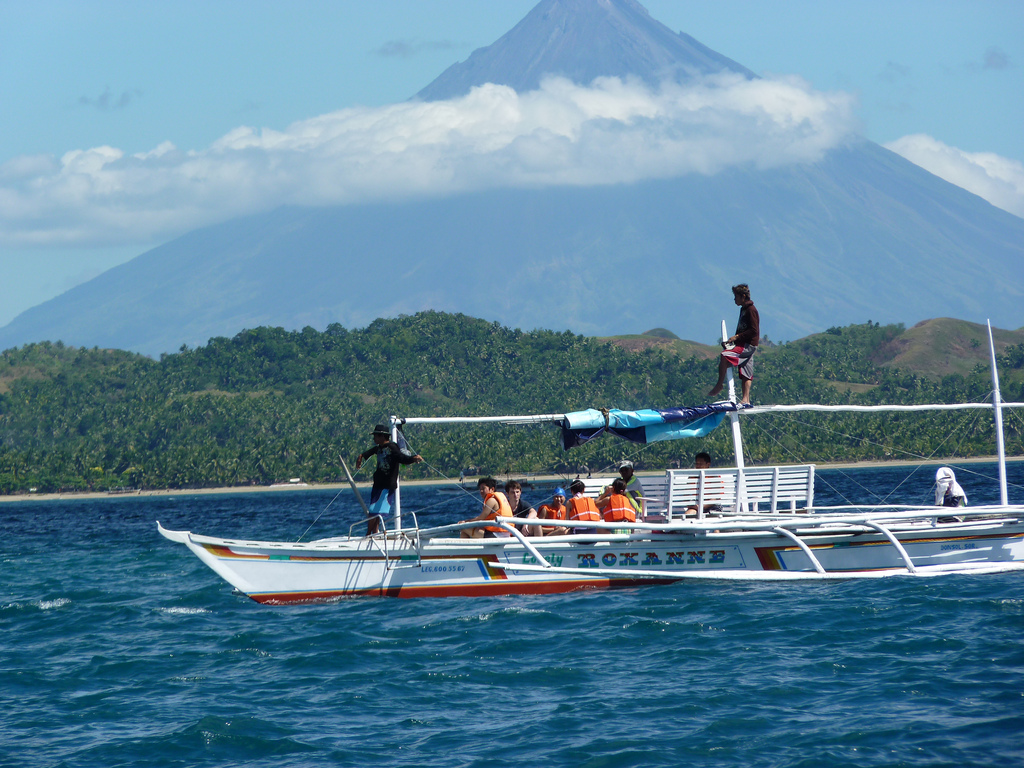
#7 Corregidor – Corregidor played an important role during the invasion and liberation of the Philippines from Japanese forces. Heavily bombarded in the latter part of the war, the ruins left on the island serve as a military memorial to American, Filipino and Japanese soldiers who served or lost their lives on the island. Corregidor is one of the important historic and tourist sites in the country. In visiting Corregidor, one would know and understand the value of freedom and how Filipinos and Americans alike fought behind the Rock of the Philippine Islands.
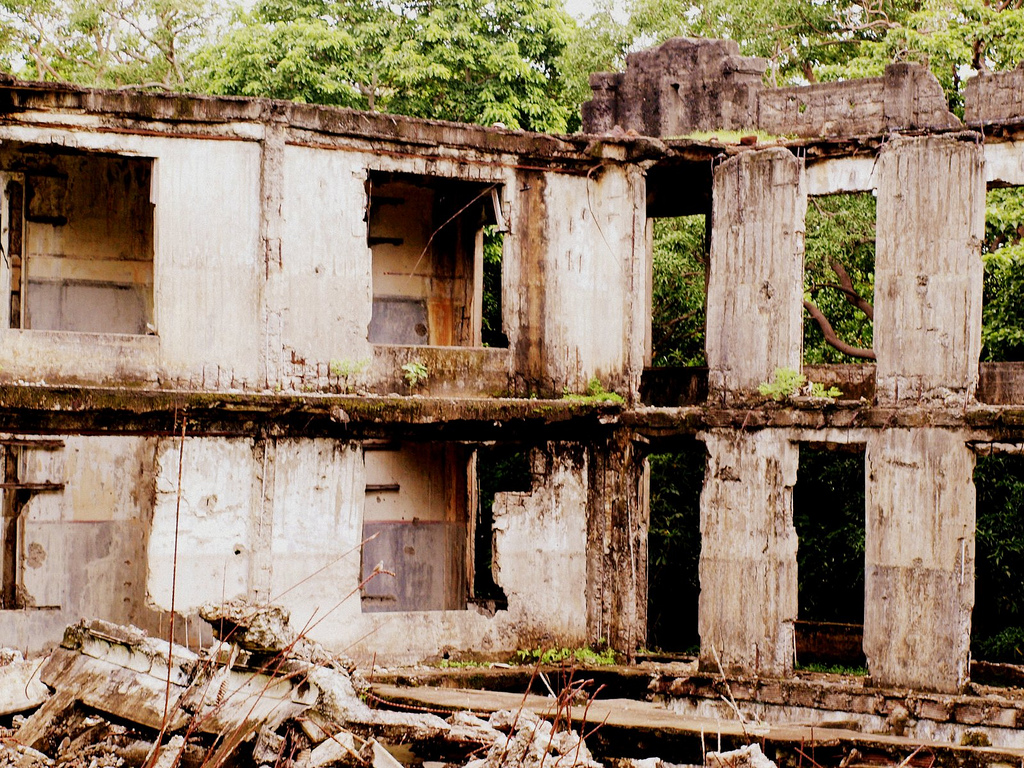
#6 Walled City of Intramuros – This used to be the seat of Government during the Spanish colonial period. Its walls were built by the Spanish to fortify the city from invasion. Inside the walled part was called “intramuros” while outside the walls it was called “extramuros” during that era. Intramuros showcases the rich Spanish heritage embodied in its roads, structures, churches and edifices. Intramuros was heavily damaged during the battle to recapture the city from the Japanese Imperial Army during the Second World War. Reconstruction of the walls was started in 1951 when Intramuros was declared a National Historical Monument, which is continued to this day by the Intramuros Administration (IA). In visiting the destination, one should not miss the Fort Bonifacio, wherein our national hero Dr. Jose P. Rizal was incarcerated prior to his execution at the Luneta during the late 1800s. Aside from Fort Santiago, there are lots of antique shops with antique houses and old churches within the walled city.
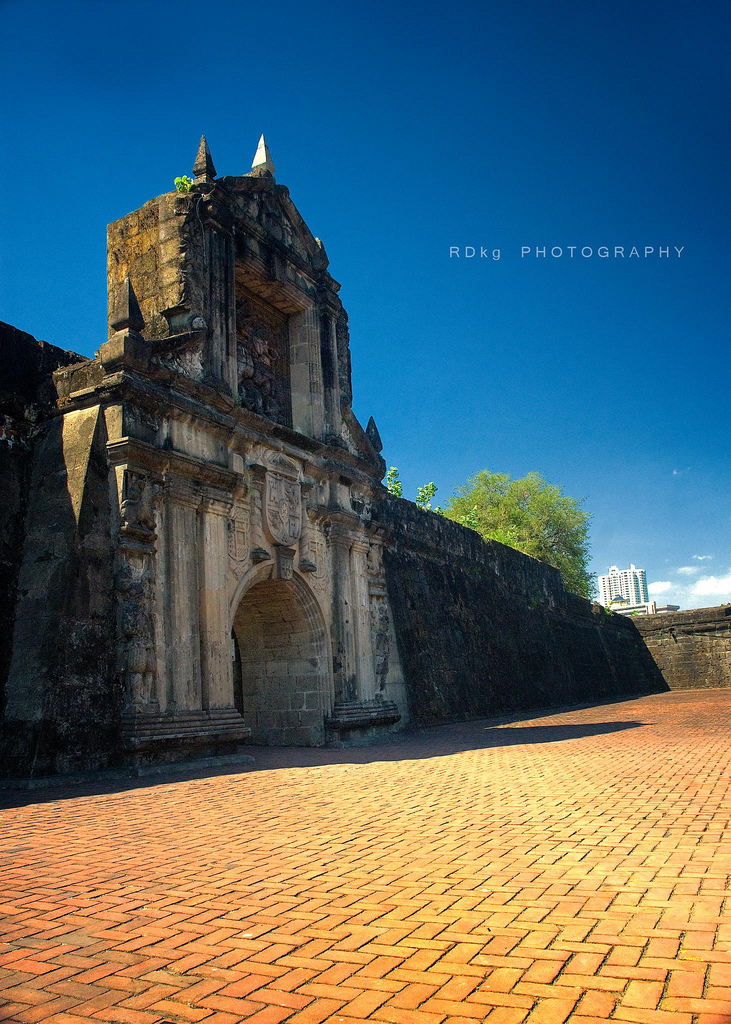
#5 Pagsanjan Falls Laguna -Pagsanjan Falls or Magdapio Falls is one of the most famous waterfalls in the Philippines. Located in the province of Laguna, the falls is one of the major tourist attractions in the region. The falls could be reached by a river trip on dugout canoe, known locally as Shooting the rapids, originating from the municipality of Pagsanjan. The boat ride has been an attraction since the Spanish Colonial Era with the oldest written account in 1894. The town of Pagsanjan lies at the confluence of two rivers, the Balanac River and the Bumbungan River also known as the Pagsanjan river. It is one of the tourist drawers in the province of Laguna.
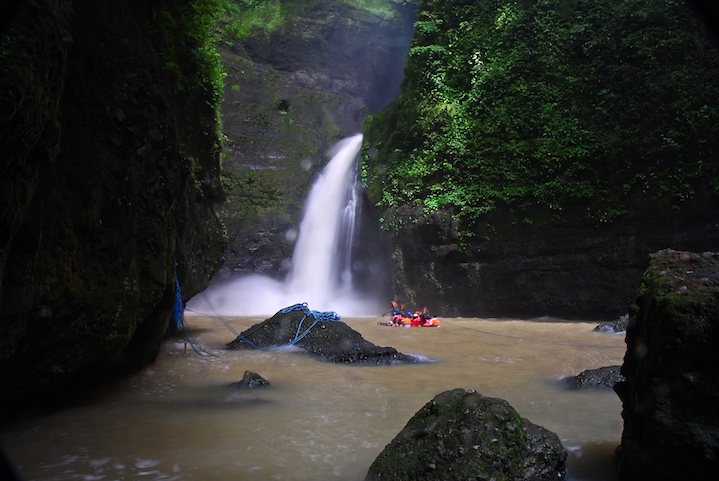
#4 Mt. Banahaw, Quezon Province – This mountain is also called the “Holy Mountain.” It is famous amongst pilgrims and mountain climbers in the Philippines. The three-peaked volcano complex is located between the provinces of Laguna and Quezon and is the tallest mountain in the CALABARZON region dominating the landscape for miles around. Banahaw is a traditional pilgrimage site for locals, believed by many as a “Holy mountain”, a spiritually-charged location. The mountain and its environs are considered sacred by local residents; the water from its sacred springs are deemed “holy water” for allegedly having beneficial qualities, issuing forth from locations called “puestos” or “holy sites”. These sites are unique natural features composed not only of springs, but also caves, streams and boulders; with names with biblical allusions, and shrines erected in, on or around them. These locations were allegedly revealed to a man named Agripino Lontoc by the “Santas Voces” or the “Holy Voices”, which also gave the names to these places way back during the Spanish Colonial Era. There are three other mountains in Banahaw, Mount San Cristobal on the western slope which is often called “The Devil’s Mountain,” Buho Malasakot Domes at the soutwestern slope and Mount Mayabobo.
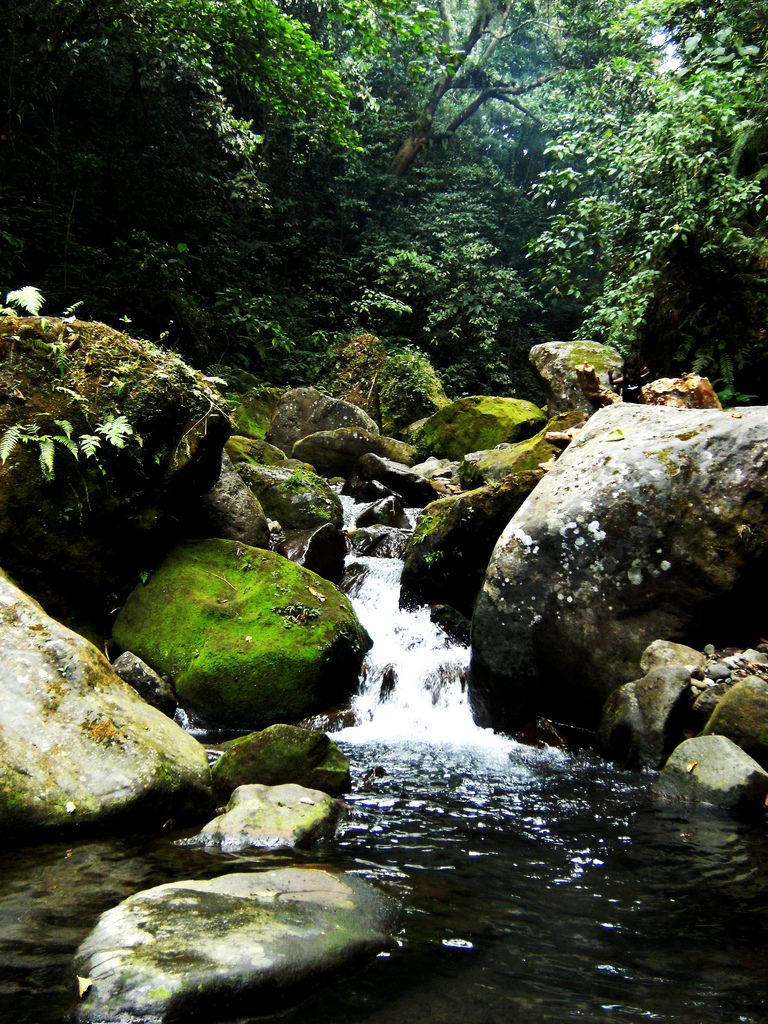
#3 Hinatuan Enchanted River – The waters of Hinatuan river is so magical that upon seeing it one would think that nature must have “Photoshopped it!” It is so magical to be natural. It is located in Bgy. Cambatong, Hinatuan, Surigao del Sur. There were folklores about the waters magic; A legend has it that one firefly-lit night, fairies floated above the river while elves watched from cliffs and banks. With their wands, the fairies stirred the water, toyed with sapphire and jade, and made the tones fade and meld to achieve a shade of bluish green that now paints the riverbed. It is also quite mysterious that fishermen in the area swear that they see fishes in the waters of the river but they couldn’t catch any no matter how they try it. There were also stories about seeing alabaster shaped women bathing in the river under the plump moon then vanishing in a swirl of fireflies.
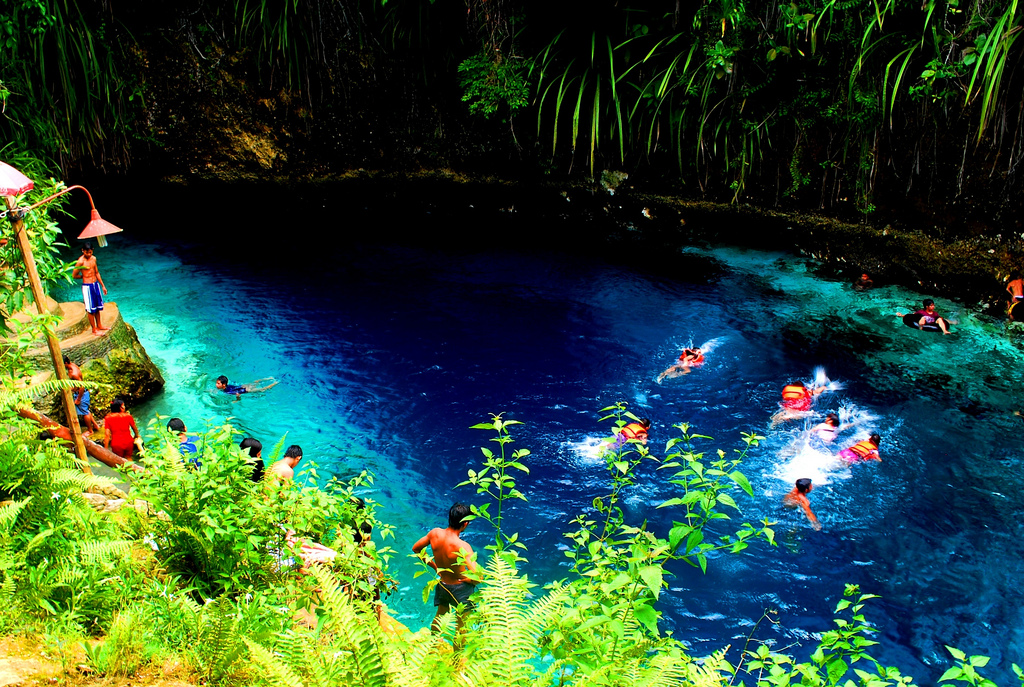
#2 Mt. Mayon Volcano, Albay – It is an active volcano located in the province of Albay, Bicol Region. It is considered to have a perfect cone because of its symmetric spherical cone. The mountain is a national park and a protected landscape in the country proclaimed as Mayon Volcano Natural Park in the year 2000.
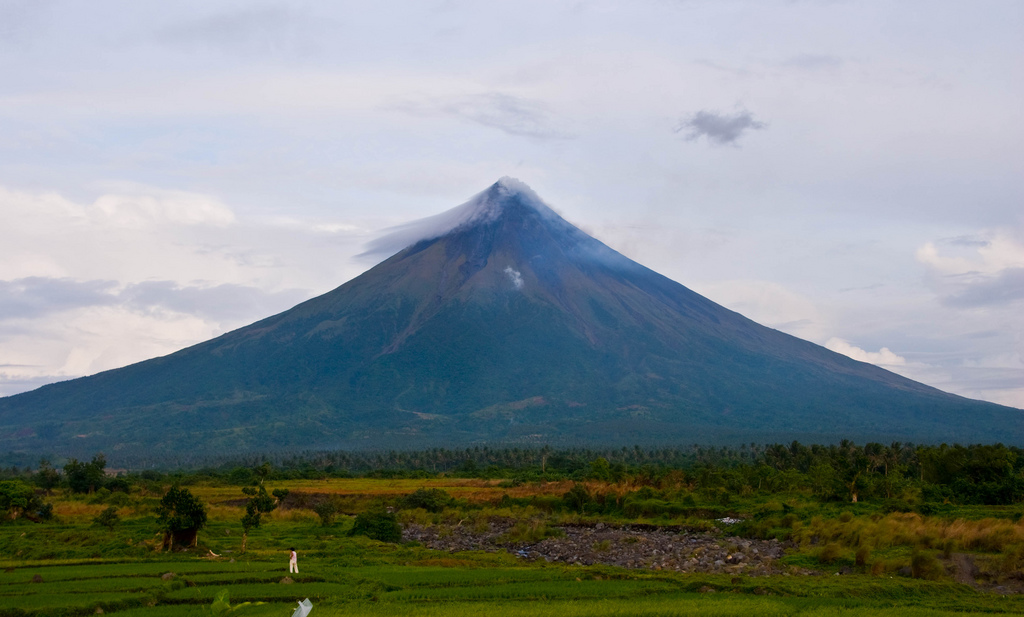
#1 Palawan Underground River Park – One of the New Seven Wonders of the World, the global significance of the Park is recognized by its designation as a World Heritage Site, a Biosphere Reserve, a Ramsar Site, and an Important Bird Area. Inclusion to these prestigious lists confirms the outstanding universal value of the Park that deserves to be conserved for the benefit of the present and future generations. The Puerto Princesa Subterranean River National Park is a source of pride and a key element in the identity of the people of Puerto Princesa in particular and of the Philippines as a whole. It is a symbol of commitment by the Filipino people in the global efforts to conserve our natural heritage.
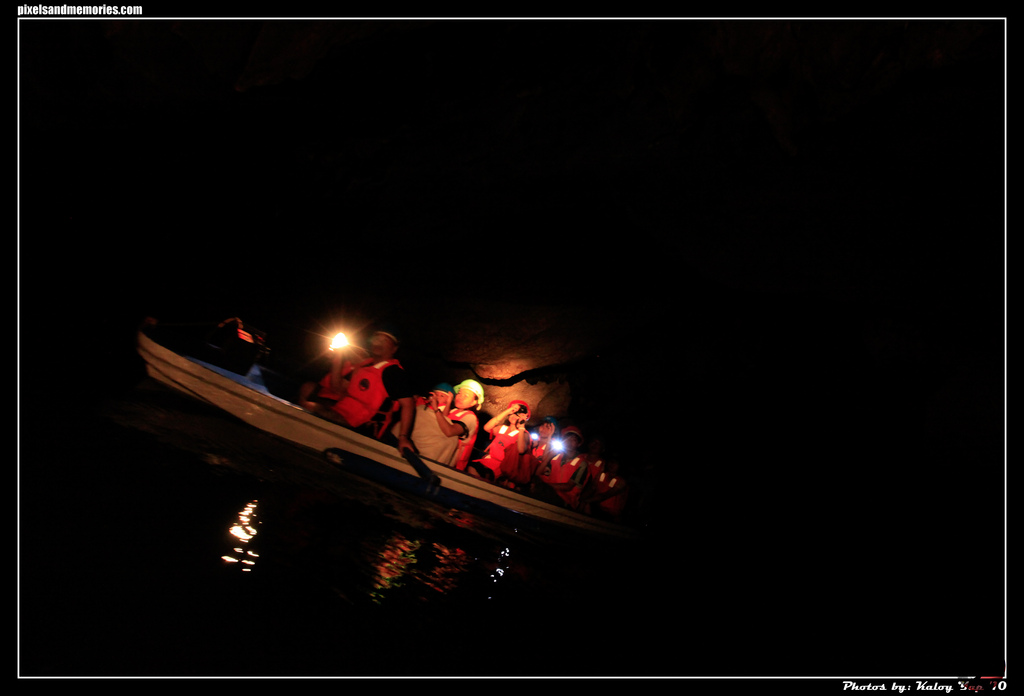
Now that we have the First 16 Beautiful Ph destinations before you die, what are you waiting for. Let us now start packing and let’s Trip the Islands!
LIKE & SHARE US ON FACEBOOK!
Nicely written list of great Philippine destionations. Great job!